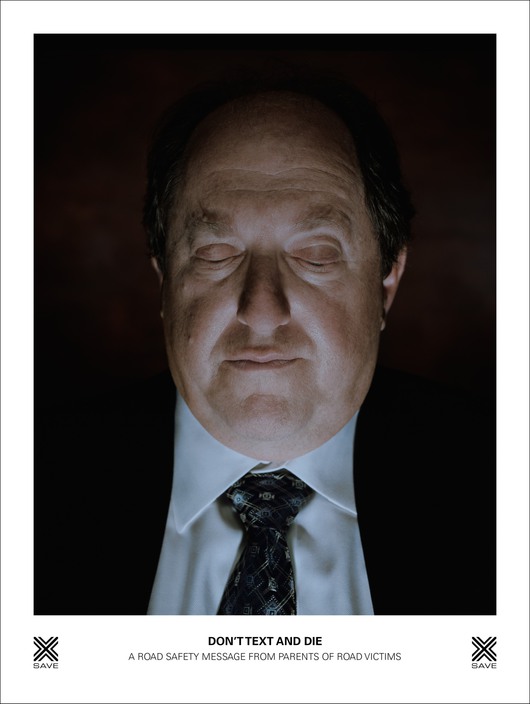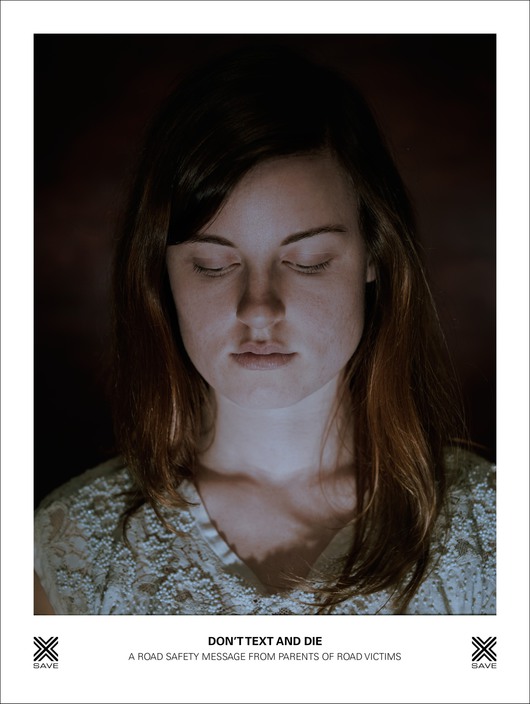Future Lion Winners Need Your Help Getting to Cannes
Posted in: UncategorizedSeveral young creatives at the Creative Circus just won the Cannes Future Lion award. Unfortunately, the team cannot afford to go to Cannes and accept their award in person. The creatives are willing to wear the logos of sponsors all over the Cannes festival. Total amount of funds that need to be raised is $20,000 for all 5 team members to get to attend.
Remember the first time you went to Cannes? Come on, you know you do. And you know you were starry eyed and all gaga prancing up and down Le Croisette. Give these budding young creatives a chance to experience all that. So who’s in? Anyone want to sponsor these budding creatives? If so, head over here and hook them up.
Smokeless Tobacco Brand Aims to Change Smoking Rules
Posted in: UncategorizedA new campaign from Denver-based Cultivator Advertising & Design for e-cigarette company FIN Branding Group touts the brand’s smokeless, tobacco-free cigarette. A new commercial entitled “Rewrite the Rules” aims to illustrate that e-cigarettes are acceptable in places were regular cigarettes are not; in bars, bowling alleys, the office and restaurants.
Two versions were created because even though e-cigarettes only emit water vapor, some broadcasters do not allow images of the vapor on air.
The campaign targets current adult smokers and will run nationally on cable channels including ESPN, Comedy Central, Discovery, FX, History, AMC, Speed, SyFy, TNT, Game Show Network, ReelzChannel, OWN, Velocity, ION Network, Military Channel, among many others. It will also appear online, on networked financial, fashion, sports, fitness and entertainment media websites, plus Facebook, YouTube. Additional support media include radio, magazines and newspaper (with couponing). The media agency is Women’s Marketing, Inc., in Atlanta.
Pegadinha do bem? App Presente Certo ajuda namorados a escolher o presente
Posted in: UncategorizedHá alguns meses, comentamos sobre as pegadinhas em um Braincast, reforçando que algumas ações de mau gosto não eram bem-vindas tanto pelo público quanto por nós, editores do B9. Mas quando se trata de uma pegadinha do bem, que mal tem?
Para ajudar os namorados a encontrar o presente certo para seus respectivos, o Sicredi criou um aplicativo de Facebook que faz dá uma leve enganada por uma boa causa.
O(a) namorado(a) entra, escolhe quem é o(a) respectivo(a) e lista alguns presentes que a pessoa poderia gostar.

É gerado então um link para uma espécie de promoção de mentirinha. A promoção ainda tem diferentes roupagens, para ter relação com o tema do presente (esportes, decoração, entre outros).
Assim que o respectivo responde a promoção, uma mensagem é enviada para o namorado e, voi-lá, ele(a) saberá exatamente o que comprar para o Dia dos Namorados.

Sinceramente, achei a ação simples, mas de muito bom gosto. Quem assina é a Morya de Porto Alegre. Veja mais no próprio aplicativo.
 Post originalmente publicado no Brainstorm #9
Post originalmente publicado no Brainstorm #9
Twitter | Facebook | Contato | Anuncie
Surreal Animal Street Art – This Colorful Street Art is Animal Hybrid Focused (GALLERY)
Posted in: UncategorizedComedy Troupe Prepares to Improvise Three-Minute Ad on Live TV
Posted in: Uncategorized
Forgetting that a lot of improv comedy stinks, ad agency 18 Feet & Rising is partnering with British improv troupe Mischief Theatre to produce a live ad that will air on U.K. Comedy Central on the evening of June 17. The idea is simple: With no advance preparation, the Mischief players will get three minutes to improvise an ad live on the air for a product selected without their knowledge beforehand. Three-minute ads are too much when the material is written ahead of time, but I have to admire Mischief's willingness to take this project on. Pulling a legitimate commercial—even a bad one—out of thin air is no easy task, although it's probably more pleasant than soliciting topics from a typical improv comedy audience.
![]()
#PubLooShocker: A pegadinha publicitária mais brutal que você já viu
Posted in: UncategorizedA propaganda-pegadinha ganhou contornos nunca antes vistos nesse primeiro semestre de 2013. São diversas ações das mais variadas marcas, geralmente em espaços públicos, que se atingem poucas pessoas no momento da execução, podem acumular milhões em audiência online. Em um Braincast recente, discutimos os limites desse tipo de pegadinha.
Limite (ou a falta dele), aliás, é uma palavra que vem bem a calhar nesse exemplo da ONG britânica Think!. Eles tem o histórico de chocar em suas campanhas, mas dessa vez o choque pode ser fatal.
Uma ação para falar dos perigos de beber e dirigir utiliza uma ideia brutal no banheiro de um pub. É uma variação hardcore dessa outra realizada pela MINI. A única pergunta é: E se fosse com você?
Criação da Leo Burnett, que redefiniu o significado de “propaganda impactante”.

 Post originalmente publicado no Brainstorm #9
Post originalmente publicado no Brainstorm #9
Twitter | Facebook | Contato | Anuncie
Bollore Says Son Yannick Will Follow Him As Havas Chairman
Posted in: UncategorizedHavas Chairman Vincent Bollore is making it clear he wants his son Yannick to soon replace him as chairman of the Paris-based global ad group.
As Havas’ VP and deputy CEO, Yannick Bollore is involved in the running of the group on a day-to-day basis, particularly in the media operations where his expertise lies. He ran Bollore Group’s TV channels before moving to Havas about a year ago.
At the annual shareholder’s meeting on Wednesday, Vincent Bollore concluded his comments on the company’s financial results and strategies by saying that Havas is an innovative young company with an innovative young leadership. He cited as examples a number of executives who are all in their forties, including Global CEO David Jones, 46, and Dominique Delport, 44, managing director of Havas Media.
Grumpy Cat Is Not OK With You Drinking at Prom
Posted in: Uncategorized
The curmudgeonly mug of Tardar Sauce, the Internet sensation known informally as Grumpy Cat, has been spotted on an outdoor board promoting a dry prom in Elizabeth, Pa. A picture of the board greatly pleased Reddit, the original source of Tardar's fame. The ad is one of a kind and was paid for by Elizabeth Forward High School, which held a design competition for students and chose four winning boards. J.T. DeMarco, a junior, created the Grumpy Cat design with some great concepting and a poor grasp of copyright law. DeMarco told the local news, "I think it does work because it's something that's really popular that a lot of kids see, so they kind of can relate to it." Luckily, it doesn't seem like Tardar's owners have seen it. Or maybe they're just not grumpy enough to sue.
![]()
Shocking Drunk Driving Stunt Pranks Unsuspecting Bar Patrons
Posted in: UncategorizedAfter you have watched this prank created by Leo Burnett London for the UK’s Department of Transportation THINK campaign and have regained your senses and maybe your heart is back inside your chest, we can safely report no innocent bystanders were harmed in the administration of this stunt.
After all, there’s only so much scaring the shit out of people you can do before they begin to sue your ass. Hence, those pranked in this stunt are actors.
Still, even to actors, this stunt drives home the point. It ain’t pretty getting into a car accident because you had too much to drink.
This Movement of Movements
Posted in: UncategorizedRebooting the capitalist imagination.

GURCAN OZTURK/AFP/GETTY IMAGES
Watching the Twitter feeds light up as the #OccupyGezi protests metastasized from a local protest against the destruction of a historic park into something much grander and more ambitious, it was hard not to get excited.
A part of me could not help but envy Lisa Morrow’s vantage point. There’s nothing like seeing ordinary people joining together and rising up against a nasty government.
In Cairo, when attacked by the army and police they tore up the very streets, and turned them into weapons. It was a powerful demonstration of the truth recognized by all great political thinkers, from Hobbes, through Hume to Chomsky, that power lies at the end of the day not in the hands of the rulers, but of the ruled. The police don’t give us permission to take to the streets, we give it to them.
Following quickly on the heels of this euphoria, however, was a nagging sense of doubt. I’d seen this movie before. In Iran in 2009, and again in Egypt – not during the 2011 protests against first Mubarak and then the US funded Military – but in 2012, when Cairo, Alexandria, Suez and other secular strongholds rose up against the Muslim Brotherhood.
In both those cases, as in Turkey now, a cosmopolitan ‘secular’ minority with a historically enlarged role rose up in what looked like a revolutionary outpouring. But their targets were not dictators, they were democratically elected leaders. The same thing is happening now with Istanbul’s “white Turks”.
Reporting from Tehran in 2009, I am very embarrassed to say, I was taken in. Younger and dumber even than I am now, I went along with the press pack that surrounded me, who in turn relied on local sources who were far from a representative sample of the Iranian population. I am still not 100 per cent certain about the election of 2009, but have been forced to concede over the years that serious evidence of result-altering-scale fraud has just not been produced.
It was a situation where a sizable minority were richer than their opponents not only in material but in cultural wealth – their bookshelves often overflowing with tomes in many languages. Thus plugged in to global culture and communications technologies, as well as being concentrated in the big cities where all the press and government buildings are, they were able to amplify their voice on the global stage. More power to them. A specialty of the Iranian regime thugs was sending in packs of men on high-powered dirt-bikes, two to a bike one driving and one wielding a kind of modern adaptation of the medieval mace. A stick with a chain on the end of it, which in turn had a Taser on the end of it. It was very ugly.
Similarly ugly was the repression against anti-Brotherhood protests in Cairo. However, the protesters’ side had some pretty ugly elements too, which often went under-reported in the Western media, both left and right alike.
The deaths that occurred were widely circulated, with numbers being tweeted and broadcast as they came in over a horrible violent weekend settling at a total of just over a dozen. When the dust settled it was clear that most of the dead were from the Brotherhood side, with their political offices being stormed and set ablaze. The inter-webs were strangely quiet.
Once the revolutionary (non-Brotherhood, non-old regime) candidates in Egypt managed to cancel each other out in a textbook example of vote splitting, it was Ahmed Shafik, a former air force man like Mubarak and Sadat before him who ran against Morsi in the final vote. He only lost by a few percentage points, as many more globalized Egyptians, including my wife, found themselves unable to vote for either candidate. Thankfully many non-Brotherhood voters made a different call, held their noses, went to the polls, and voted against Shafik.
Since then the much anticipated third force in Egyptian politics has failed to materialize and by now major secular opposition papers are running headlines calling for a military coups.
These three countries Iran, Egypt, Turkey are to the Middle East something like what France, Germany and England are to Europe – only more so as their geographical spread and strategic positioning gives each a greater sphere of independent influence. All are now controlled by Islamist regimes that, according to the polling and the election results, have the backing of the majority of the population. All these regimes have inherited an authoritarian apparatus build by secular western backed predecessors. In none of these cases is it clear that this authoritarian core would be weakened should the Islamists lose power – especially not if that would mean handing the reigns back to the current secular leadership.
The problem of the Turkish protesters then becomes the problem of progressive forces globally: What is your alternative? It is a question that is starting to get serious. As the echoes of the Arab spring, Occupy and Indignados movements refuse to fade, the hope lingers that out of these spontaneous explosive uprisings and the new culture of courageous political participation can be ignited amongst what WikiLeaks founder Julian Assange calls the “internet educated” generation, a new political force could be emerging.
If this is to happen however, we need to offer these component movements more than just cheer-leading and loudly ringing moral support. One thing that can be offered by Western progressives, who have the time to spare from more pressing issues (like not getting shot for protesting), is the development of new models of organization, which can allow this “movement of movements”, to borrow a term from the 90’s “globalization” struggles, to mature into an enduring force and formulate a collective vision, without reverting to the same top down models used by the institutions and forces we seek to transform and defeat.
This however seems a long way off, and a more likely outcome seems a “Wave Speech”-like cresting of this movement within months or perhaps years – unless it transforms, and it isn’t at all clear it will to transform the way we would like it to. As for the Turkish protesters, photos of whom I too have been gleefully sharing on Facebook, well guys, it’s a nice high for now, enough to outweigh all the teargas and blood, but the comedown is already on the horizon.
Read more on Adbusters.org
Top-Down Thinking Is Bad for Your Brand
Posted in: UncategorizedWhat’s wrong with the strategies developed by many giant corporations? They tend to be developed “top down.”
Al Ries
Jonah Lehrer Shops a Book on the Power of Love
Posted in: UncategorizedLee Clow Shares 30-Year Relationship With Steve Jobs
Posted in: UncategorizedIn this PTTOW video, ad legend Lee Clow discusses his 30-year relationship with Apple CEO Steve Jobs. As Chairman and Global Director of TBWA\Worldwide, Lee Clow has, of course, been responsible for such iconic campaigns as the Energizer Bunny, the Taco Bell Chihuahua and most Apple work from the 1984 Super Bowl Spot to “Think Different” and the iPod silhouettes.
Give it a watch.
Photoshop: A ética da manipulação digital
Posted in: UncategorizedO fotógrafo Rodrigo Braga fez de seu ensaio Fantasia de Compensação* uma forma de manipulação fotográfica única. Ele que deixava de lado o uso do Photoshop em seus trabalhos, criou um projeto onde a ferramenta é essencial. Ao fundir sua própria cabeça com a de um cão, o fotógrafo criou uma metamorfose perturbadora e impressionante. Produzindo, dessa forma, um trabalho que une o poético e todo o potencial das técnicas utilizadas no Photoshop.
“Eu me incomodava com o fato dos recursos digitais estarem sendo associados à fotografia apenas como um incremento formal à imagem captada pela lente, ou mesmo apenas como uma exagerada sucessão de aplicações de efeitos. Queria algo que operasse pelo quase imperceptível e deixasse o espectador tonto, flutuando entre o virtual e o palpável. Tinha a vontade de ‘fabricar’ em ambiente digital uma ‘realidade’ que, de qualquer forma, pudesse ter ocorrido em verdade, pela habilidade manual humana“, diz Rodrigo.
O trabalho de Rodrigo mostra um uso totalmente artístico do Photoshop, criando essa realidade que o artista buscava, além de fugir dos tratamentos que estamos acostumados em peças publicitárias, capa de revistas, retoques em fotos pessoais etc. Ele também nos faz pensar como hoje em dia não conseguimos fugir dos efeitos digitais. Uma foto amadora ou profissional sempre tem o mínimo de retoque e, além disso, estamos cada vez mais familiarizados e acostumados a enxergar e aceitar essas manipulações.

Além da praticidade, a ferramenta permite também a intensificação de esteriótipos e a idealização de um ser humano perfeito
Artisticamente ou não, a verdade é que muitas vezes nos perguntamos se um bom efeito sobrepõe, substitui ou até mesmo tem mais atenção que o clique do fotógrafo. Em caso de projetos fotográficos concebidos como arte – como em Fantasia da Compensação – seria impossível pensar a imagem sem os efeitos digitais. Sem o Photoshop o fotógrafo não conseguiria criar o que queria.
Qual o limite?
O bom senso do uso do Photoshop fica por conta da liberdade artística e da vontade do profissional em utilizar os efeitos que a ferramenta permite. Mas quando as fotos são feitas para outros fins não podemos seguir o mesmo pensamento.
Para Kaue, diretor de imagens do Grupo Luz, o limite do uso do Photoshop é a qualidade. Ele tem que contribuir com a imagem e tornar a foto melhor, com a visualização desejada. Para isso é necessário uma ética profissional como em qualquer outra profissão, a responsabilidade deve prevalecer.
“O maior erro de um profissional é achar que ele pode tudo, não importando as regras físicas existentes na natureza. Tal como dar uma caneta e papel a qualquer pessoa não faz dela um poeta, é necessário especializar-se em seu manuseio. O maior mito do Photoshop, com certeza, é dizer que qualquer um pode usá-lo. A grande verdade é que ele pode ser aprendido por qualquer um, mas o uso ético e correto vem após grande experiência e estudo”, diz Kaue.
Campanhas como “A Beleza Real” de Dove ajudaram a colocar o tema em discussão entre público e mercado
É claro que as manipulações fotográficas não são um privilégio do dias de hoje. Antigamente os profissionais confeccionavam suas montagens no laboratório. Com a chegada do Photoshop, as necessidades criativas e o aperfeiçoamento com rapidez e agilidade do trabalho com imagens foram supridas.
O grande problema é o mal uso da oportunidade. Muitas vezes o limite do uso da ferramenta para melhorar a qualidade de uma imagem é distorcido e deixado de lado. Ao mesmo tempo em que o software proporciona rapidez, praticidade, e criação de ensaios artísticos, ele permite, também, a intensificação dos esteriótipos, a idealização de um ser humano perfeito e as manipulações fotográficas para fins políticos.

No caso do fotojornalismo a qualidade da foto não pode sobrepor o comprometimento de um fato noticiado ou histórico, seja na captura da foto ou na pós-produção. Não é o mesmo trabalho de fotografia para publicidade ou arte, onde o tratamento é maleável para cada tipo de objetivo final. É preciso ter bom senso e comprometimento com a profissão para não usar a ferramenta como forma de distorcer a verdade fotografada.
Quem nunca viu o Sarkozy mais magro, mísseis que nunca existiram, armas colocadas nas mãos de pessoas erradas, e infinitas mentiras fotográficas que tem o objetivo de enganar e manipular estrategicamente determinado assunto?
Sem falar do uso excessivo e desregulado das manipulações digitais como se fossem um produto de beleza. Ninguém mais pode ter uma gordurinha acolá, poros faciais, uma bochecha grande etc. Com o uso desnecessário do Photoshop começamos a aceitar que existe um ser humano perfeito e que todas as fotos das outras pessoas devem chegar nessa imagem inatingível de perfeição.
Felizmente estamos deixando de lado essa vontade de ser um padrão e finalmente o mercado está se policiando e fugindo das bizarrices e situações irreais. O foco é cada vez mais a beleza real, como nos questionamentos levantados pelas campanhas de Dove nos últimos anos. As pessoas perceberam que devem dar mais atenção para esse tipo de abordagem e questionar de onde veio determinada imagem, se houve ou não uma manipulação milagrosa e exagerada.
Em meio as discussões do bom senso no uso do Photoshop, sempre fica a dúvida se muitas vezes uma imagem que não quebra os conceitos éticos e continua sendo única, teve uma base muito bem feita ou alcançou essa nível a partir de um bom profissional de tratamento.
O ovo ou a galinha?
Cássia Desbesel, designer e bicampeã do Photoshop Conference Brasil, acredita que o fotógrafo continua sendo o dono do “momento”.
“Se não for ele para captar aquele olhar ou aproveitar aquela luz natural o trabalho pode ser comprometido. Eu costumo dizer, que o tratamento corrige qualquer coisa, mas não tem nada mais convincente do que um momento original, e este, só o fotógrafo pode conseguir” – Cássia Desbesel
Para Kaue, pensar se o trabalho de um fotógrafo é melhor que de um profissional de tratamento é o mesmo que questionar se o que veio primeiro foi o ovo ou a galinha. “Os dois interagem e um depende do outro. Sem um bom fotógrafo não existe uma boa fotografia tal como sem um bom tratamento ela também não existe. Acho que hoje o principal papel do fotógrafo é orquestrar a confecção de uma imagem, dar a matéria prima, o tom e a composição”.

É verdade que a tecnologia está se sobressaindo à antiga forma de se conceber a fotografia. Algumas técnicas acompanharam o desenvolvimento da mídia e conduziram os fotógrafos a renovações de linguagens, já o Photoshop prevalece como a da nossa época. Mas ainda é imprescindível a união das técnicas de aprimoramento digital com o olhar do fotógrafo para dar qualidade a foto final. E mais que isso, é importantíssimo que os dois pensem em conjunto sobre a ética do que estão fazendo para elaborar um trabalho de sucesso.
Diante disso, o que vai destacar certa imagem ou trabalho perante há tantos outros que se utilizaram dessa facilidade tecnologia das manipulações rápidas e acessíveis vai ser a novidade, a criatividade e o pensamento dos profissionais em conjunto para completar um o trabalho do outro.
Renato braga lembra “nessa perspectiva da excelência da imagem, a relevância de uma produção cada vez mais deixa de ser a “bela foto” em si, para encontrar seu valor numa discussão de linguagem. Ou seja, o que fará um bom criador de imagens não é a câmera nem o computador, mas sim sua visão singular de mundo e sua contribuição para uma discussão mais ampla, no campo simbólico e sensível”.
*A série Fantasia de compensação foi realizada utilizando procedimentos que mesclam produção plástica e manipulação digital não causando sofrimento e morte ao animal. O texto Dos bastidores de um auto-retrato esclarece o processo de realização da obra.
 Post originalmente publicado no Brainstorm #9
Post originalmente publicado no Brainstorm #9
Twitter | Facebook | Contato | Anuncie
CW Network Completes Upfront Sales
Posted in: UncategorizedDon’t Text And Die Campaign Fueled With Pompous Pontification
Posted in: Uncategorized
Here’s the problem with this don’t text and drive campaign from Belgium-based Happiness Brussels for Parents of Road Victims which employed New York artist Andres Serrano as photographer. The campaign, entitled Don’t Text and Die is, of course, designed to call attention to the dangers of texting while driving. And the campaign’s title harkens the death texting while driving can cause the driver and those around him.
Now we understand this is one of those artsy fartsy approaches to advertising that attempts to lend some cachet to an otherwise mundan cause campaign but if all you are going to talk about in the campaign’s documentary is how the subjects in these photographs look like they are dead while texting, they should probably be texting while they are being photographed.
Yes, we know, we know. It’s a metaphor. And we get that Serrano is big on shooting death. But do you think your average, uncultured 17-year-old is going to make any kind of connection? This is the kind of campaign that is designed to appeal not to the actual target audience but to peers and critics.
Kind of like most the entires you see at Cannes.






















